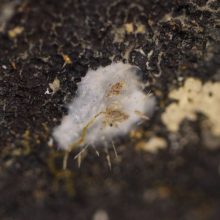Source: Natural History Museum (UK)
Author: Katie Pavid
Scientists have collected data on a tiny sponge thought to be at risk from seabed mining.
This newly discovered species could be a ‘canary in a coal mine’ to allow scientists to monitor the impacts of this new industry.
The Clarion-Clipperton Zone (CCZ) is a vast area of the Pacific Ocean between Mexico and Hawaii. At six million square kilometres, it is roughly 24 times bigger than the UK.
The zone is important because it’s the world’s largest area of ocean that is targeted for deep-sea mining. Mineral companies and nation states, eager to secure access to precious metals, are attracted to the area because it is rich in polymetallic nodules – small chunks of minerals scattered on the seafloor.
These nodules are mostly made of manganese, but are also rich in cobalt, copper and nickel, which mean they could be a vital resource in developing new technologies like electric cars.
While the potential to harvest the nodules has been recognised since the 1960s, new technologies and the changing price of metals mean that mining is now much closer to being economically viable.
Continue reading here.

